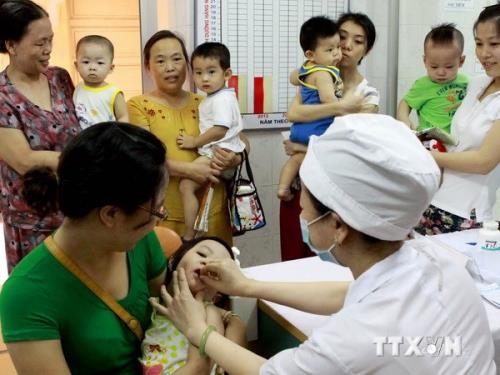.jpg) Society
Society

Children aged 6 months to 36 months and new mothers nation-wide will be given free vitamin A supplements during a national campaign to be launched this week on Micro-Nutrient Day.
 |
| A baby receives a free vitamin A capsule at a health clinic in Hà Nội. — VNA/VNS Photo Dương Ngọc |
HÀ NỘI — Children aged 6 months to 36 months and new mothers nation-wide will be given free vitamin A supplements during a national campaign to be launched this week on Micro-Nutrient Day.
Deputy Director of the Nutrition Institute under the Health Ministry Lê Bạch Mai said the institute had distributed more than 6.71 million doses of vitamin A capsules as part of the campaign.
“In 22 impoverished provinces, the vitamin will also be given to children aged 6 months to 60 months, and more than 1 million deworming tablets will be provided to children aged between 24 and 60 months,” Mai said.
Running under the theme “Use micro-nutrient-fortified food every day,” Micro-Nutrient Day falls on June 1 and 2 this year. It will provide opportunities for promoting communication across the country to raise the public’s awareness of the importance of micro-nutrients and ways to increase the consumption of them in daily meals. New mothers are encouraged to initiate breastfeeding within one hour of birth and to give newborns no food or drink other than breast milk during the first six months.
Mai said the addition of vital micro-nutrient supplements iodine, vitamin A, zinc and iron to one’s daily meals was a fundamental step in preventing malnutrition.
The NIN survey conducted in 2015 said nearly 33 per cent of pregnant women, 25.5 per cent of women of reproductive age and nearly 28 per cent of children aged under 5 suffered from anaemia. Some 13 per cent of children aged under 5 suffer from vitamin A deficiency, as their daily meals meet only about 65 per cent of the necessary intake. Last year’s figures indicated that 25 per cent of children aged under 5 had stunted growth, while 14.5 per cent were underweight. — VNS



.jpg)




.jpg)
